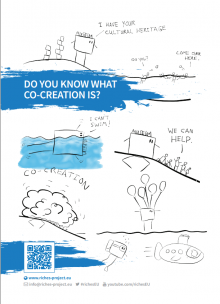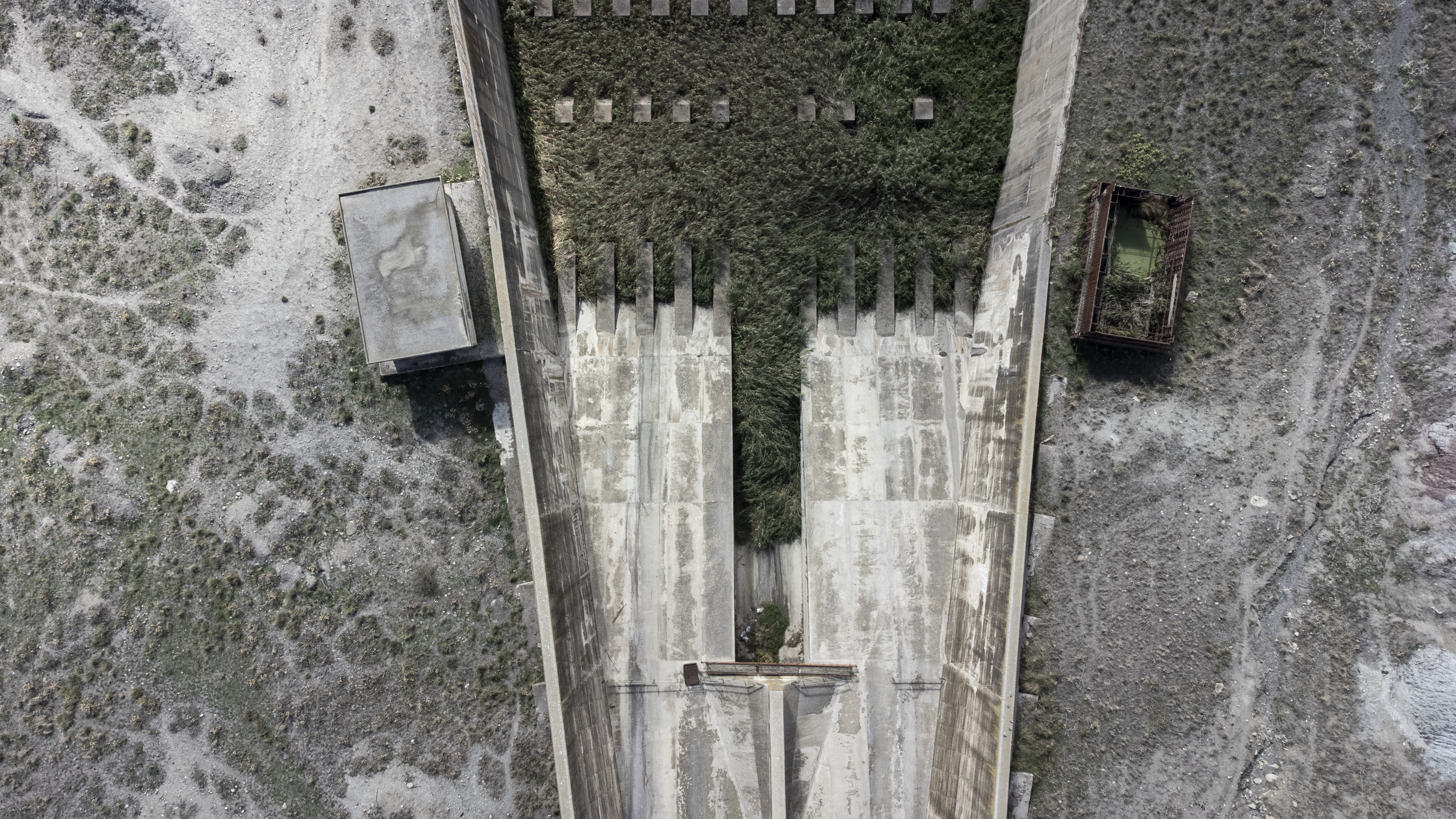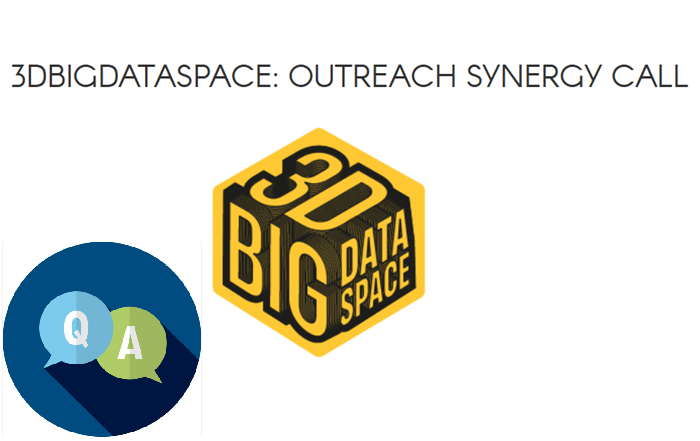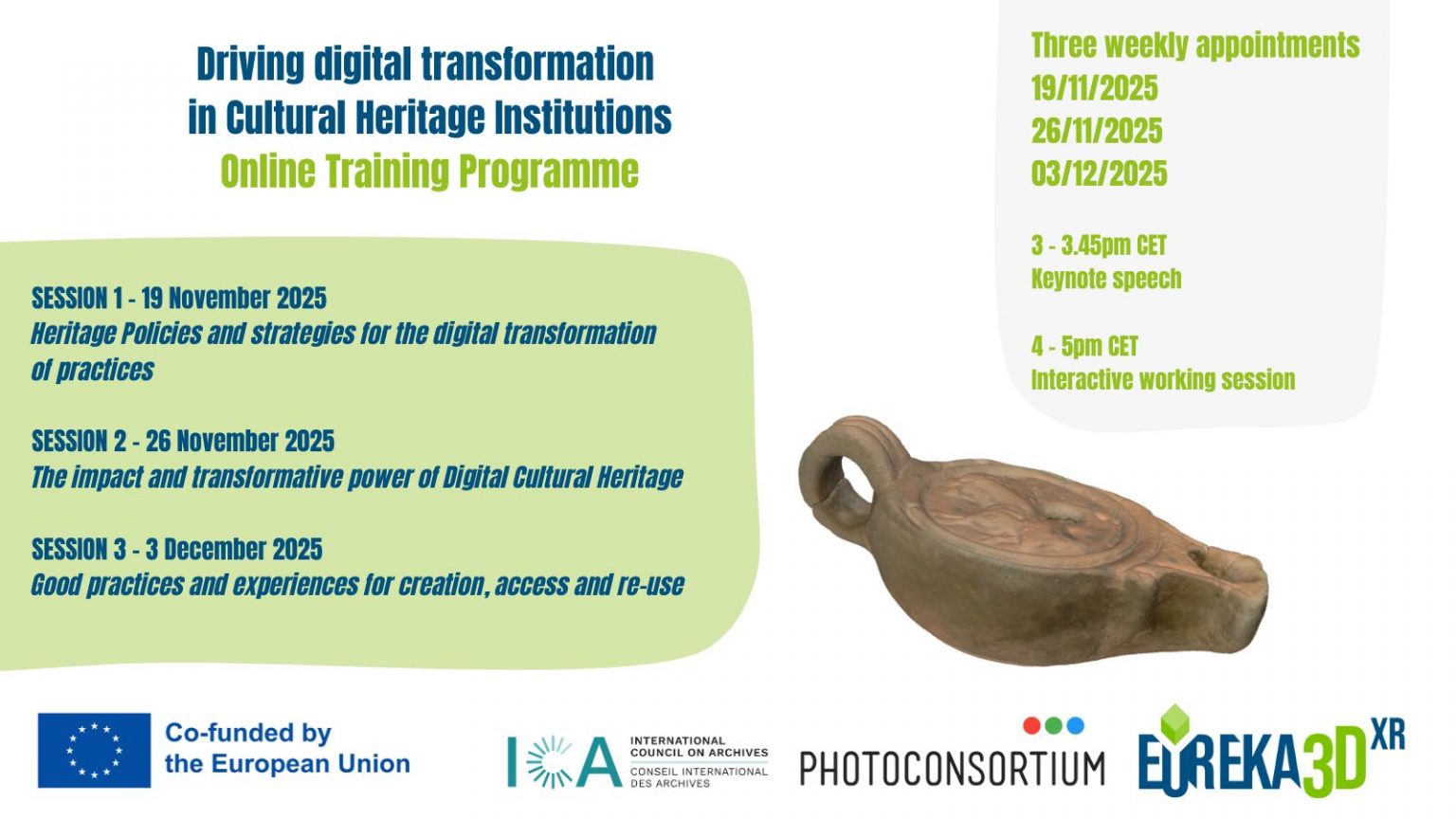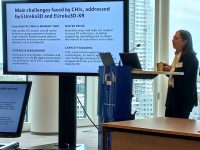Login Status
-
Free text
UPCOMING EVENTS:
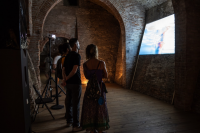 Upcoming appointment: October 8th, Museo della Grafica (Pisa) at 4PM
Upcoming appointment: October 8th, Museo della Grafica (Pisa) at 4PMOn the 19th of September, the UNFRAMED – Towards a New Reality exhibition was successfully opened at the Palazzo del Parlascio in Pisa, with the capability of uniting culture, research, and tourism. The vernissage was followed on the 24th by a … Continue reading →
 Collaboration agreement has started between SECreTour and GAL Elimos in October 2025
Collaboration agreement has started between SECreTour and GAL Elimos in October 2025The SECreTour Network is growing! GAL Elimos (Gruppo di Azione Locale Elimos) is a Local Action Group based in Calatafimi Segesta, in the Trapani area (Sicily). Its mission is to foster local development and innovation through EU-funded rural development programs, … Continue reading →
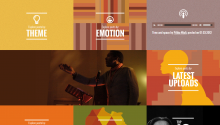
Badilisha Poetry X-Change is both an online audio archive and Pan-African poetry show delivered in radio format. Now the largest online collective of African poets on the planet, Badilisha has showcased and archived over 350 Pan-African poets from 24 different countries. It reflects the myriad of rhythms and rhymes, voices, perspectives and aspirations from all corners of the globe.
Africans have limited access to the vast poetic work of both historical and contemporary African poets. There has never been an archive of these poets’ work that is both expansive and easily accessible. It means that many Africans are not inspired and influenced by their own writers and poets and this negatively impacts their personal growth, identity, development and sense of place.
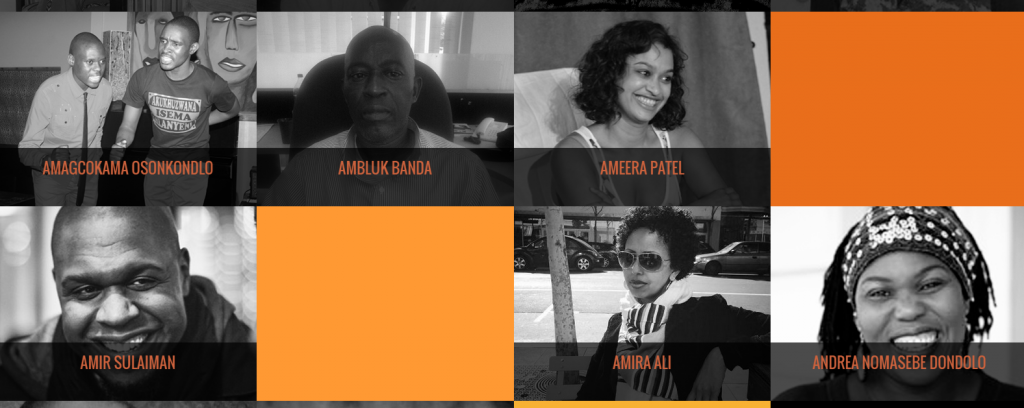 In comparison to their counterparts on other continents, African poets receive little exposure for their work and few viable career opportunities. Both factors are imperative to their development as artists. For instance, of all the published books in the world, the works of African authors comprise only two percent. This imbalance exists for a myriad of reasons, but can to a large extent be attributed to the reality that both within Africa and beyond, reading and listening to African voices is not prioritised.
In comparison to their counterparts on other continents, African poets receive little exposure for their work and few viable career opportunities. Both factors are imperative to their development as artists. For instance, of all the published books in the world, the works of African authors comprise only two percent. This imbalance exists for a myriad of reasons, but can to a large extent be attributed to the reality that both within Africa and beyond, reading and listening to African voices is not prioritised.
Badilisha was initiated in 2008 as an annual, large-scale international poetry festival. It produced festivals for three years, as well as a series of related poetry interventions in the form of seminars, workshops and training programmes. The project as of 2012 evolved into an audio archive and radio show, aiming to address two key issues: the absence of any readily accessible archive of Pan-African poets and the need for a new stage in which Pan-African poetry could reach a global audience.
Badilisha Poetry X-Change has archived over 350 African poets from 24 different countries from both the continent and the global African Diaspora. Each week, two new poets are featured on the website and via podcasts. These poets represent a broad range of voices, genres and language, thereby reflecting contemporary trends and evolutions in the medium along with some of the historic giants of African poetry.
Badilisha’s extensive network of Pan-African poets and poetry organisations enables to create much-needed exposure and viable opportunities for Africa’s poets.
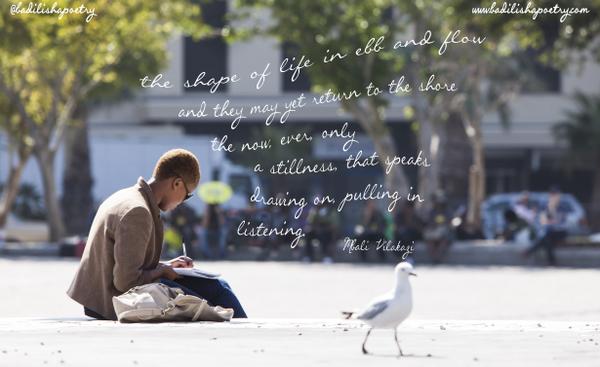
Poetry in Pictures feat Mbali Vilazaki
Badilisha Poetry is a project of the Africa Centre. The Africa Centre is a physical entity as well as an ongoing philosophical journey that explores how Pan-African cultural practice can be a catalyst for social change. The Africa Centre was established in 2005 as an international centre for creativity, artistic excellence and intellectual engagement. Based in Cape Town, South Africa, the Africa Centre’s social innovations extend across the African continent.
Source: badilishapoetry.com
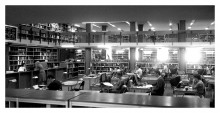
The CIVIC ESPISTEMOLOGIES project’s has the task to design a Roadmap for broadening e-Infrastructure deployment to support citizen researchers in digital culture. A first draft version of the Roadmap has been presented at the Workshop on the Roadmap in Leuven (20 February 2015). The Consortium received a lot of feedback from external experts, and this Workshop will be the occasion to present an advanced version of the Roadmap, in order to obtain other inputs from different stakeholders before finalizing the Roadmap.
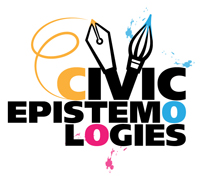 The project deals also with the role of the Cultural Heritage Institutions (CHIs). Our task is to define which are the policies that should apply to cultural institutions in order to be ready to cooperate with citizens and their organisations in research on cultural heritage, and how to assure the quality of the result. This task is also exploring how the availability of infrastructure services can support this process of innovation and which are the conditions for cultural heritage institutions to be ready for this, such are training, equipment, new workflow, IPR management, etc…
The project deals also with the role of the Cultural Heritage Institutions (CHIs). Our task is to define which are the policies that should apply to cultural institutions in order to be ready to cooperate with citizens and their organisations in research on cultural heritage, and how to assure the quality of the result. This task is also exploring how the availability of infrastructure services can support this process of innovation and which are the conditions for cultural heritage institutions to be ready for this, such are training, equipment, new workflow, IPR management, etc…
This Workshop will be the occasion to discuss with European Cultural Heritage organisations about the role that can be played in this innovation process by the participation of citizens and the use of e-Infrastructures. We have already collected feedbacks of CHIs about involving citizens for services digital cultural heritage.
Invited are partners, associate partners and experts from museums, libraries and archives, researchers and a few representatives from civil associates beyond the consortium.
PROGRAMME (download the pdf file here)
More information are available here: http://www.civic-epistemologies.eu/workshop-about-innovation-policies-for-cultural-heritage-istitutions/
Register here: http://www.civic-epistemologies.eu/workshop-about-innovation-policies-for-cultural-heritage-istitutions/#REGISTER
Venue:
National Széchényi Library (NATIONAL LIBRARY)
BUDAPEST, Szent György tér 4-5-6., H-1014
‘F’ Building of Buda Castle

 The last two decades have witnessed significant changes to the ways in which European cultural heritage is created, used and disseminated, with the advent of the internet, the increasing use of social media, the digitisation of collections and the widening access to images, and the use of mobile devices. Intellectual property rights (IPR) in general and copyright in particular impacts on how cultural heritage is produced and consumed, developed, accessed and preserved in this digital world. New practices, such as collaboration and co-creation of cultural heritage change how we engage, alter, communicate and participate in cultural heritage and require appropriate responses via copyright law for the digital economy.
The last two decades have witnessed significant changes to the ways in which European cultural heritage is created, used and disseminated, with the advent of the internet, the increasing use of social media, the digitisation of collections and the widening access to images, and the use of mobile devices. Intellectual property rights (IPR) in general and copyright in particular impacts on how cultural heritage is produced and consumed, developed, accessed and preserved in this digital world. New practices, such as collaboration and co-creation of cultural heritage change how we engage, alter, communicate and participate in cultural heritage and require appropriate responses via copyright law for the digital economy.
This policy brief, developed following RICHES research, describes how European policy-makers and European cultural heritage institutions should develop European copyright policies and strategies for the cultural heritage sector using the rights to culture and cultural rights as guiding principles. The impact is to lay emphasis on inter alia access to culture, cultural integrity and cultural communication and to develop ways in which copyright can support those goals.
This policy brief is mainly for European policy-makers; also, European cultural heritage institutions are interested in this policy brief because of the significant roles they have in the changing cultural heritage landscape within Europe.
Download the RICHES IPR Policy Brief (PDF, 532 Kb)
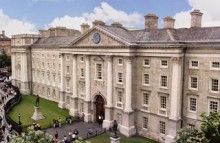
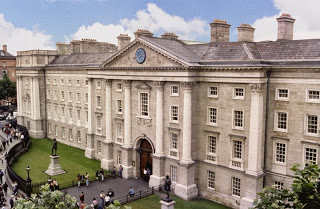 A joint conference of Irish Innovative Users Group and European Innovative Users Group will take place in Dublin at Trinity College, of interest to those using Innovative Interfaces Inc. (III) library systems and products such as Millennium, Sierra, Encore. There are approximately 120 delegates due to attend.
A joint conference of Irish Innovative Users Group and European Innovative Users Group will take place in Dublin at Trinity College, of interest to those using Innovative Interfaces Inc. (III) library systems and products such as Millennium, Sierra, Encore. There are approximately 120 delegates due to attend.
Irish E-Space partner LGMA is of course taking this opportunity for project dissemination!
There will be delegates from libraries around Europe so the event will be a good arena for promoting the project to the wider library sector that will include academic as well as public libraries.
The programme and more details can be found here

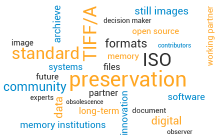 As PREFORMA partner and expert in TIFF we would like to inform you about the launch of this initiative. We count on you to participate in the new TIFF/A specification: your expertise will be very useful! Please get involved in any of the 3 levels.
As PREFORMA partner and expert in TIFF we would like to inform you about the launch of this initiative. We count on you to participate in the new TIFF/A specification: your expertise will be very useful! Please get involved in any of the 3 levels.
Archiving has fundamentally changed in the transition from analogue to digital. Technological changes of storage systems make of digital archiving a very active process. On the other hand, if analogue photographs are stored correctly, one can expect that these artifacts will still exist and will be usable even after some decades. Maybe they will face some kind of degradation but they will still be there. In the digital domain, this is completely different, digital information can be endangered because:
- Data carrier decay with time
- Hardware to read and access data carriers changes and gets incompatible with earlier generations
- File formats become obsolete or they feature technologies that are contrary to the needs of digital archiving.
It is inevitable that hardware will have to be migrated after a relatively short period of time but the file format should be as stable as possible to prevent file transformation that can cause loss of data or the introduction of artifacts. Therefore, it is very important to choose a format definition that fits with both aspects: quality and compatibility to archival needs.
From a technological point of view digital archiving is not something that is, in most cases, strongly related to a specific type of data. Nearly all users of digital data have the same problems and therefore it can help to see what other communities have done to solve typical archival obstacles. Taking for example a look at the PDF we notice a widely established file format that became the technical basis for today’s PDF/A standards, a derivative of the Portable Document Format for archival purposes. The basic PDF standard features interesting functionality like for example JavaScript and executable file launches or even encryption of content. However, some of the core functionality of PDF runs counter to the needs for digital preservation of electronic documents. PDF-files might become unreadable in the future or their content even might change depending on the time of access. Both are inacceptable for any archival use. Therefore, the ISO standardized version PDF/A has been created. PDF/A differs from PDF by omitting features that are not suited for long-term archiving. In addition, the use of standards-based metadata is mandated in PDF/A.
We therefore propose a subset of TIFF which is fully compatible with the TIFF standard but marks some tags as mandatory, some as optional and some as forbidden in order to guarantee the correct rendering in the future. In analogy to PDF/A format we propose to call this Format TIFF/Archive or TIFF/A.
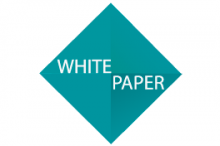 White Paper
White Paper
The versatility of the TIFF format has made it very attractive for memory institutions for long term archival of their digital images. However, since the TIFF format offers such a great flexibility, it is not guaranteed that in the future a standard TIFF reader will be able to read some TIFF images.The limitations of the baseline TIFF are too severe for many applications in digital archiving. In this sense, TIFF/A is not a new file format but a version of the TIFF format that is suitable for long term archival.
For further information: dowload here the WHITE PAPER.
Why TIFF/A?
The versatility of the TIFF format has made it very attractive for memory institutions for long term archival of their digital images. However, since the TIFF format offers such a great flexibility, it is not guaranteed that in the future a standard TIFF reader will be able to read some TIFF images.
The limitations of the baseline TIFF are too severe for many applications in digital archiving. It is important that, besides crucial technical metadata such as ICC color profiles (in case of color images) also important descriptive metadata is stored within the image file. Having descriptive metadata available (such as content description, iconography, copyright and ownership information etc.) is crucial for every archive. Having this information in the same file as the image data guarantees that this information will always be associated with the image.
The TIFF/A standard defines a subset of standard TIFF tags which are either required, optional of forbidden for the purposes of long term archival. Within this context, the goal must be that:
- The image can be opened with standard software even in the far future. Since the TIFF/A documentation is open and simple, even in case there is no standard software around, a reader can be programmed easily in the future which will render the image correctly and extract the essential descriptive metadata.
- The image data does not contain features that are not documented and therefore cannot be understood and rendered correctly in the future.
Conforming to the TIFF/A standard will guarantee that the essential digital information of a image file always can be read and interpreted correctly. Since TIFF/A is a subset of the TIFF standard, all current TIFF readers are able to correctly and completely render TIFF/A just out-of-the-box.
Image File Formats, Digital Archival and TIFF-A
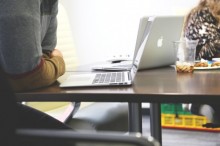 About Us
About Us
The TIFF/A Standard initiative is promoted by the Digital Humanities Lab of the University of Basel, the Agents Research Lab of the University of Girona and Easy Innova with the support of many interested memory institutions. This standard will be created in parallel with DPF Manager, an open source TIFF format validator that, in addition to the current TIFF ISO Standards, will be the first conformance checker for the TIFF/A new standard. This initiative has been boosted by PREFORMA, a PCP project that aims to address the challenge of implementing good quality standardised file formats for preserving data content in the long term.
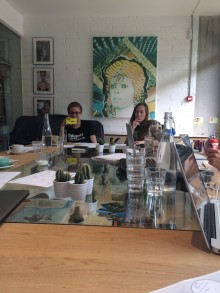
by Gregory Markus, NISV
On June 26th at the aptly titled “Proud Archivist” in London the Remix Summit Agency, Netherlands Institute for Sound and Vision and Exeter University met to hold the first of six Business Modeling Workshops (BMW) as part of Europeana Space. The goal of these Workshops is to take the 3 finalists that come out of each hackathon through a grueling day of business modeling to shape, hone, and improve their projects’ market potential.
The first BMW featured the three finalists that participated in the Europeana TV Hacking Culture Bootcamp in Amsterdam at The Waag Society on May 8, 9, 10. These three finalists were Bosch, ART(F)INDER, and Mnemosyne. You can read the hackathon report here and watch the video report here.
Throughout the day the three projects were guided through the famous Ostwewalder Business Model Canvas. As the teams filled in aspect they were critiqued and guided by the project representatives. At certain points big decision had to made. Forks in the road were omnipresent for all projects, and at each fork, choosing the left or right road would sometimes drastically change their business model, market potential, customer segments etc.
However, as the day went on all three projects began to take shape and strengthen greatly. Over the next week Remix and the Netherlands Institute for Sound and Vision will review the final business model canvases for each project and decide which will win the coveted Europeana Space Incubation Support Package provided by Remix and the project consortium.

 IETF PRAGUE 2015, 93rd Internet Engineering Task Force Meeting is starting on 19 July, 2015 and ending on 24 July, 2015. The Meeting location is going to be Hilton Prague Hotel.
IETF PRAGUE 2015, 93rd Internet Engineering Task Force Meeting is starting on 19 July, 2015 and ending on 24 July, 2015. The Meeting location is going to be Hilton Prague Hotel.
IETF PRAGUE 2015 is seen as a special Meeting which will cope with the topics of Engineering, Evolution Of Internet Technologie, Usage Of Protocols In The Internet, Operational Problems In The Internet and a lot more.
FFV1 and Matroska are on the agenda for the upcoming IETF meeting on July 22nd:
https://datatracker.ietf.org/meeting/93/agenda/dispatch/.
For further information visit the official website of IETF Prague 2015.
About the IETF
The Internet Engineering Task Force (IETF) is a large open international community of network designers, operators, vendors, and researchers concerned with the evolution of the Internet architecture and the smooth operation of the Internet. It is open to any interested individual. The IETF Mission Statement is documented in RFC 3935.
The actual technical work of the IETF is done in its working groups, which are organized by topic into several areas (e.g., routing, transport, security, etc.). Much of the work is handled via mailing lists. The IETF holds meetings three times per year.
The IETF working groups are grouped into areas, and managed by Area Directors, or ADs. The ADs are members of the Internet Engineering Steering Group (IESG). Providing architectural oversight is the Internet Architecture Board, (IAB). The IAB also adjudicates appeals when someone complains that the IESG has failed. The IAB and IESG are chartered by the Internet Society (ISOC) for these purposes. The General Area Director also serves as the chair of the IESG and of the IETF, and is an ex-officio member of the IAB.
The Internet Assigned Numbers Authority (IANA) is the central coordinator for the assignment of unique parameter values for Internet protocols. The IANA is chartered by the Internet Society (ISOC) to act as the clearinghouse to assign and coordinate the use of numerous Internet protocol parameters.
The IETF Standards Process is described in The IETF Standards Process (see also RFC 2026).
New participants in the IETF might find it helpful to read Getting Started in the IETF and The Tao of the IETF, (also available as RFC 4677). First-time attendees may also want to visit the Education (EDU) Team Web site where information and presentations on IETF roles and processes are available.
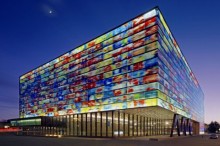
The Netherlands Institute for Sound and Vision (‘Nederlands Instituut voor Beeld en Geluid’), in short NISV, is a cultural-historical organization of national interest, collecting, preserving and opening the audiovisual heritage for as many users as possible: media professionals, education, science and the general public. In addition, the institute develops and disseminates knowledge in the area of audiovisual archiving, digitization and media history. Sound and Vision (‘Beeld en Geluid’) has one of the largest audiovisual archives in Europe. The institute manages over 70 percent of the Dutch audiovisual heritage.
NISV has been involved in many research projects aimed at fostering and understanding the impact of opening cultural heritage collections to creative reuse. A blogpost recently appeared in the NISV website tells a brief history and the experience of NISV in this field.
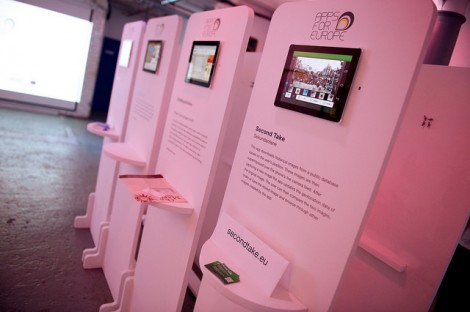
source Apps for Europe (CC BY 2.0).
“As a publicly funded national archive for Dutch audiovisual heritage, we believe allowing (creative) reuse of our collections – when copyright allows – enables innovative applications based on our shared cultural wealth and contributes to a bigger, more diverse and – sometimes – more meaningful reach of these collections“, writes Maarten Brinkerink, main author of the post.
Through recent projects such as Apps4Europe, Europeana Creative and more recently Europeana Space, NISV is trying to cooperate to leverage on the availability of digital cultural content for creating value and, possibly, concrete business opportunities for both content providers and creative industry. The concept of hackathons intends to do more than developing new codes or new software, as it was originally conceived; it intends to have two worlds (the developers and the content providers) talking eachother, and doing things together for addressing investors, although “investors are mostly interested in innovative concepts. The reuse of open cultural data and content is not often an (important) criteria for them, let alone a unique selling point.”
The innovative incubation process put in place in Europeana Space is more focused on business models rather than on technical innovation: “First the generation of innovative concepts is supported through a hackathon, then the most promising concepts are supported through a business modeling workshop (focussing on the concept design and market value proposition) and finally one concept is picked selected for a business incubation trajectory. While the concept creation is based on open cultural data and content reuse, the quality of the concept put forward by the participants their previous experience, drive and market savviness are equally – if not more – important.”
But the very crucial question of the whole matter is: does open content generate real benefits? is opennes the key for making money from (digital) cultural heritage? The experience of NISV tells that “there is still very limited ‘hard’ proof that the reuse of open cultural data and content leads to the generation of economic value”, instead “value increase that can be easily observed are of a more social nature, like greater and more diverse access to culture, meaningful contextualization of cultural resources leading to new and open knowledge, new forms of creativity and new and/or stronger relations between the creative industries, cultural institutions and their audiences.”
Which is certainly a fertile and promising environment to generate new services, such data aggregation, data enrichment, data analysis, which can emerge from concepts based on open cultural data and content.
Read the whole article here.

MuDA stands for Museum of Digital Art. The Museum of Digital Art is dedicated to the art of code and the questions raised by the interactions between data, algorithms and society. It will have a virtual presence, on pretty much every screen connected to the internet. And a physical presence in the ground floor of the first high rise building of Zurich, Switzerland. The MuDA is initiated by the non-profit Digital Arts Association and bound to open its doors in January 2016.
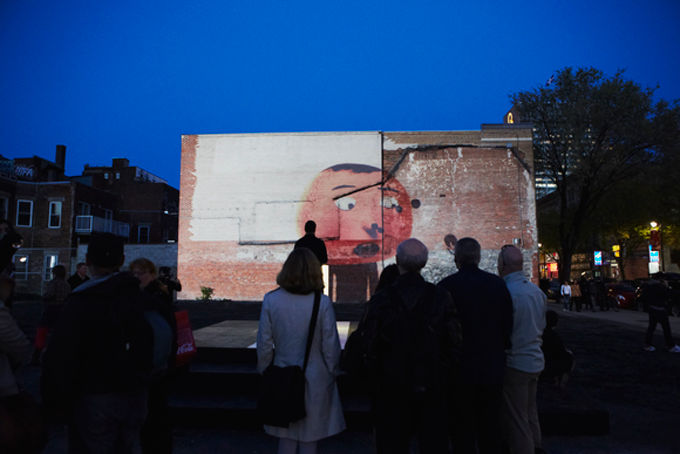
BLA BLA, by Vincent Morisset
The MuDA will host three exhibitions per year, which will last three to four months each. For every exhibition, an experimental digital version (catalogue) of it will be developed. In between events, physical computing workshops, panel discussions and talks related to digital technology and society will be hosted.
MuDA is supported by Kickstarter, a funding platform for creative projects that counts on you for the museum to be launched: to convert the now empty ground floor into a public museum, Digital Arts Association had to get the approval of the Historic Monuments Protection Authority, a process that took 13 months instead of the 3 they had promised. This left very little time to raise the complete funding for the museum. The initiators managed to secure the operating budget in only 6 months, but they urgently need help now to cover the missing part of the construction fees.
The deadline to sign the rental contract is Wed, Jul 8 2015 11:09 PM CEST. They cannot sign without being able to cover the costs of the necessary transformations, which are already planned and would start immediately after signing. They really, really need your support to make this happen, the MuDA will not be able to open without you.
Discussing the impact of digital on society
The radical shift brought by digital technology is unprecedented. The speed of its development and its increasingly fundamental role in our society creates a strong urge to look at the complexity of its resulting impact. Data accessibility, algorithms taking over human tasks, the implementation of artificial intelligence… The list of questions raised by digital technology is very long. At the moment, spaces to address these issues without corporate or political agendas are rare. The MuDA can become the place where these discussions can happen in an open and neutral environment. Without being too serious about it either. More in a playful and approachable way, with the aim of making complex issues tangible by tackling very concrete examples with the people directly involved.
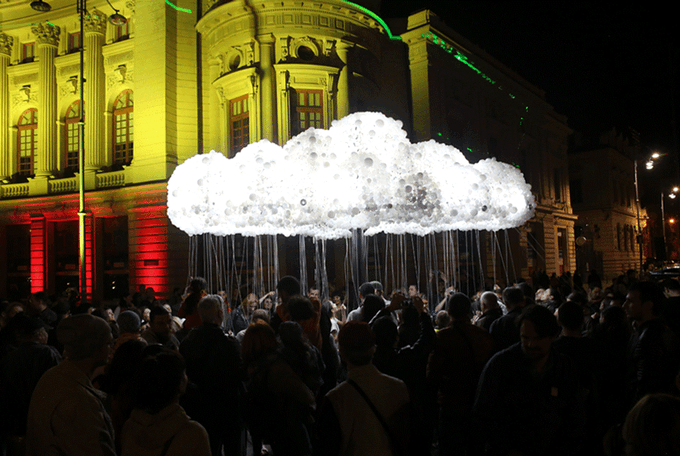
CLOUD, by Caitlind r.c. Brown & Wayne Garrett
From tech consumer to tech maker. Because code is beautyful!
Code is beautiful. A few lines of text and a handful of zeros and ones can give birth to something with astonishing intricacy. There is nothing more encouraging (and frustrating when it doesn’t work!). The MuDA is an attempt to bring this spark to a broad audience, especially to young women. It will frequently organise free tours for schools and offer workshops to interested students and teachers during which they will be able to learn how to physically take a computer apart, rebuild and rewrite them to fit their own ideas. To shift them from technology consumers to makers and maybe even make them consider this when thinking about their future.
About the building
After extensive location hunting, the possibility to invest the ground floor of one of Switzerland’s oldest high-rise made the MuDA go bananas. Quite literally, in fact.
In 1959 the Migros Cooperative, Switzerland’s largest food retailer, bought about 50.000 square metres of land on which was erected, just two years later, one of Switzerland’s first high-rise building, the Herdern Hochhaus. The purpose of the 58-meter tall building was to provide logistics, distribution and storage space for their food delivery chain, including a ripening hall for all the bananas that were dispatched from there to all corners of Switzerland.
Classified as a listed monument in 2012 due to its industrial historical importance, parts of the premises were left empty after an internal reorganisation and have since then been reconverted for cultural activities. As if it wasn’t exciting enough, this former industrial zone is Zurich’s fastest developing district and the host to a dynamic and growing creative and tech industry. The MuDA found its perfect home.
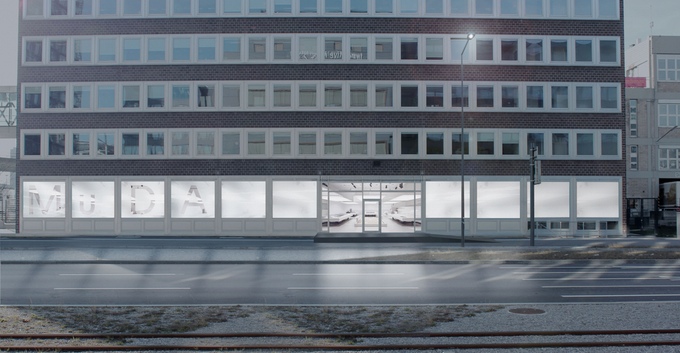
The website
The website muda.co performs as the virtual equivalent of the MuDA. It functions as a lively platform promoting digital artists, their works and experiments. It displays a permanent collection of interactive artistic experimentations and frequently reports about contemporary artists, exhibitions and artworks from a vibrant digital community from around the world.
About the initiators
The Museum of Digital Arts is a project of the Digital Arts Association (DAA), a non-profit organisation domiciled in Zurich. The DAA was founded to promote digital arts and support its creators and community in the belief in computer code’s potential and importance as an expressive artistic tool. The defined goals of the association are the following:
- Inspire and engage a broad audience with digital art
- Create public and neutral platforms to discuss the interactions between data, algorithms and society
- Promote code-based technology, science and engineering to young people, especially women and girls
- Establish and support regional, national and international collaborations in digital arts
- Operate in a lean and sustainable way, without relying on unreasonable amounts of private or public money.
The DAA was founded by Caroline Hirt (born in Hong Kong) and Christian Etter (born in Switzerland). They have previously produced exhibitions in Asia and Europe, worked for institutes like the Centre Pompidou and the Shanghai Art Museum. They are also involved in independent and experimental digital art projects and in the organisation of game jams. Their communal backgrounds are in digital media, science and technology, gender studies and journalism.
For more info visit kickstarter.com


